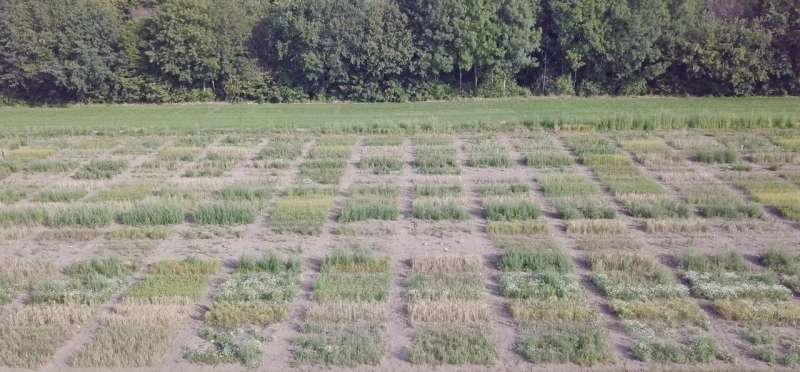This article has been reviewed according to Science X's editorial process and policies. Editors have highlighted the following attributes while ensuring the content's credibility:
fact-checked
proofread
Intercropping allows for insect conservation without yield loss

How can we halt biodiversity declines? A new study led by the Leibniz Institute for the Analysis of Biodiversity Change (LIB) shows possible solutions for agricultural landscapes. The study shows that intercropping promotes the diversity of insects and other arthropods in agriculture without affecting yields. The study has now been published in the journal Ecological Solutions and Evidence.
Arthropods play a particularly important role in ecosystems. Until now, there has been a lack of strategic experiments on how arthropods develop in diverse crop environments and how they respond to the use of agrochemicals. Experiments in arable farming have now shown that higher plant biodiversity has a positive effect on the species-rich group of organisms that includes insects, millipedes, crustaceans and arachnids.
In the study, researchers from the LIB, the University of Münster and the University of Bonn investigated how crop diversity and species, as well as the use of agrochemicals—each in different combinations and with different factors—affect arthropod biodiversity. In addition, weeds and crop biomass were measured.
The results show that higher crop diversity in intercropping had a positive effect on arthropod abundance and diversity, irrespective of land use intensity. Mixed crops with faba bean, seed flax or spring rape showed a particularly high arthropod biodiversity. This also shows that mass flowering crops were more attractive to arthropods than legumes or cereals.
"By converting parts of our monocultures to mixed crops, we could increase flower visitation from a few thousand to up to 1.5 million insect visits per hectare and thus probably also indirectly promote ecosystem services such as pollination or biological pest control," concludes Christoph Scherber, Deputy Director of the LIB.
"Intercropping may thus be a promising strategy against the decline of insects in agricultural landscapes. It could also be used to make extensive monocultures more biodiversity friendly and maintain them as a living landscape matrix. By promoting biodiversity across large stretches of land, we could secure the future of biodiversity even in intensive agriculture."
More information: Jana Brandmeier et al, Multispecies crop mixtures increase insect biodiversity in an intercropping experiment, Ecological Solutions and Evidence (2023). DOI: 10.1002/2688-8319.12267
Provided by Leibniz-Institut zur Analyse des Biodiversitätswandels



















